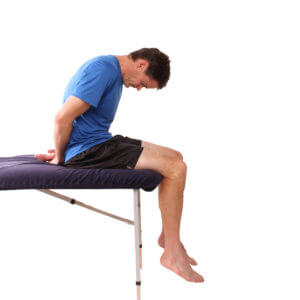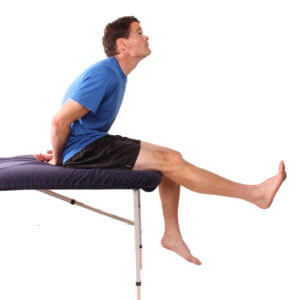Tensioners and sliders – what does the evidence say?

For many practitioners, neural tissue gliding exercises form a large part of managing nerve-related pain. Whilst these techniques are commonly practiced, our own literature review has only been able to uncover a paucity of evidence supporting its use. Published systematic reviews have also indicated this (Ellis et al 2008). This is not to say that these techniques are ineffective, but rather there appears to be far more research required to demonstrate their benefits. In this review, we will look at the quality research there is, which may help to guide your selection of these techniques.
Neural gliding techniques are proposed to reduce mechano-sensitivity by improving the ability of neural tissue to tolerate mechanical forces during movement (Nee et al 2011). Cadaveric studies have shown that simulated neural mobilisation increased intra-neural fluid dispersion, leading to the belief that the techniques may improve nerve health and function by reducing intra-neural swelling (Gilbert et al 2015).
Two types of neurodynamic technqiues are commonly used when treating patients with nerve-related pain. ‘Tensioners’ are the most well known, and involve elongation of the nerve bed. ‘Sliders‘ involve combination movements at different joints, whereby the elongation at one nerve bed is balanced by a reduction in the length of the nerve bed at another joint (Coppieters et al 2008). An example of a slider is shown in the image below.


It is proposed that sliders are a less aggressive technique and may be more appropriate for acute conditions and post-operative management. Due to the reduction in nerve tension they limit the possibility of causing nerve irritation and inflammation. Furthermore the use of large amplitude movements, with minimal nerve aggravation, may help alter the ‘representation’ of pain and reduce expectation of pain (Coppieters et al 2008).
Tensioners on the other hand, are more ‘aggressive’ but can have beneficial effects via a pumping action of the nerve. This may reduce intraneural pressure and improve circulation (Coppieters et al 2008).
So what does the evidence say about the effectiveness of sliders and tensioners? To answer this question we refer to a study undertaken by Nee et al (2012). In patients with nerve-related neck and arm pain, use of neural gliding techniques (both tensioners and/or sliders) over 3-4 weeks helped to reduce pain and increase self-reported outcomes. This was compared with a control group that was asked to continue with normal activities. The study was limited in that no placebo group was included, and therefore interaction with the physiotherapist and patient expectations may have contributed further to the improvements. The authors recognised this limitation. Regardless, this study is a step in the right direction in providing the clinical evidence behind neurodynamic techniques.
Another study by Schafer et al (2011), also demonstrated that nerve-gliding techniques provided meaningful improvements in those patients classed as having low back pain with peripheral nerve sensitisation. Those classed as having neuropathic sensitisation or denervation did not respond favourably. It should be noted however that this study did not compare outcomes with control groups and only made comparison amongst the subcategories of low back pain that were treated with neural tissue techniques.
In TrackActive Pro we have included a number of neural mobilisation home exercises, and particularly those with some evidence referenced. There is still a need for greater research to be done in this area to provide more robust evidence for their use.
REFERENCES
Start your free 30 day trial now
Discover what TrackActive Pro can do for you and your patients with a no risk, 30 day, free trial.